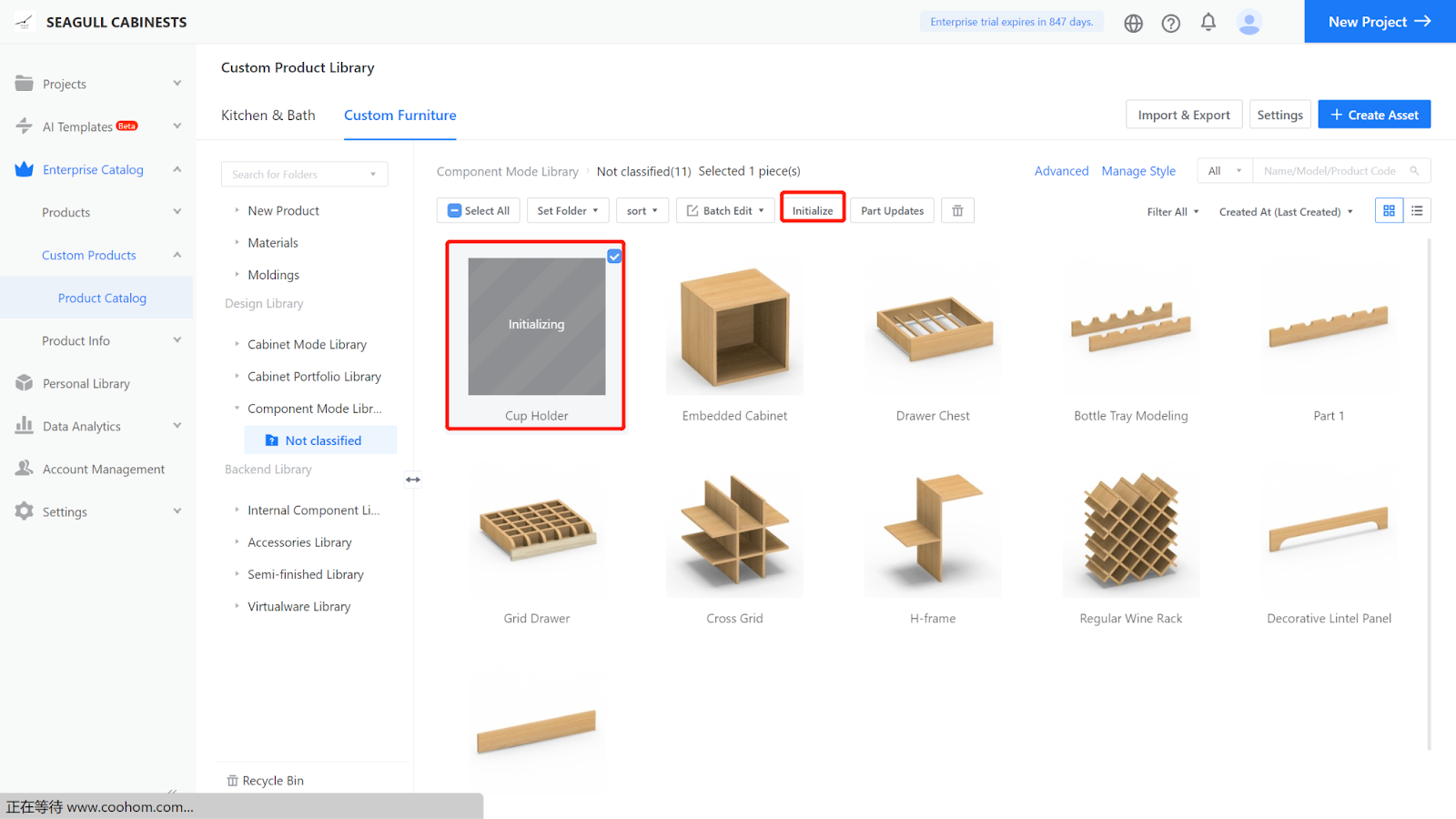Definition
A cup holder is a type of spatial combination component in the component model library.
The cup holder shown in the following image will be used as a case study for modeling (implemented through lofting and array).
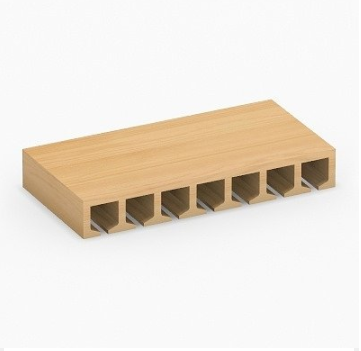
I.Uploading Contour Moldings
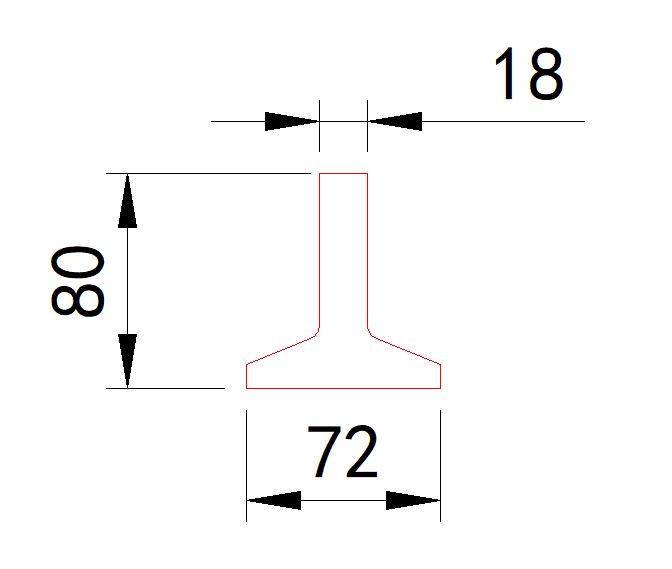
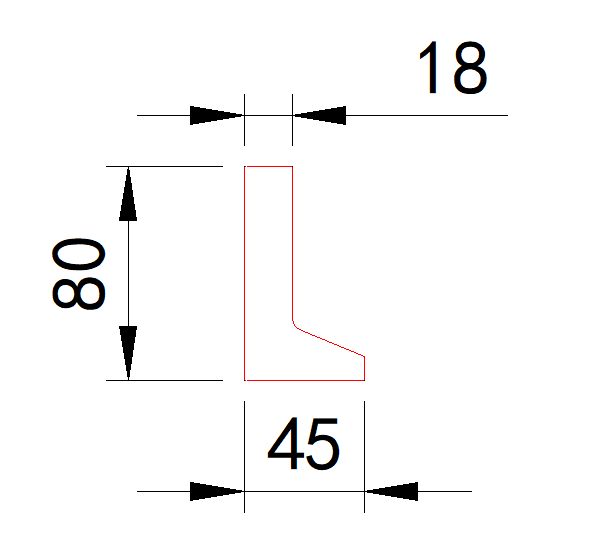
Since there is a separate tutorial for uploading Contour Moldings, it won't be explained here in detail. Upload the two Contour Moldings to the wardrobe Contour line category and save them in the corresponding location.
II.Creation Positions
Custom Furniture —Create Asset—Parametric Model Library— New—
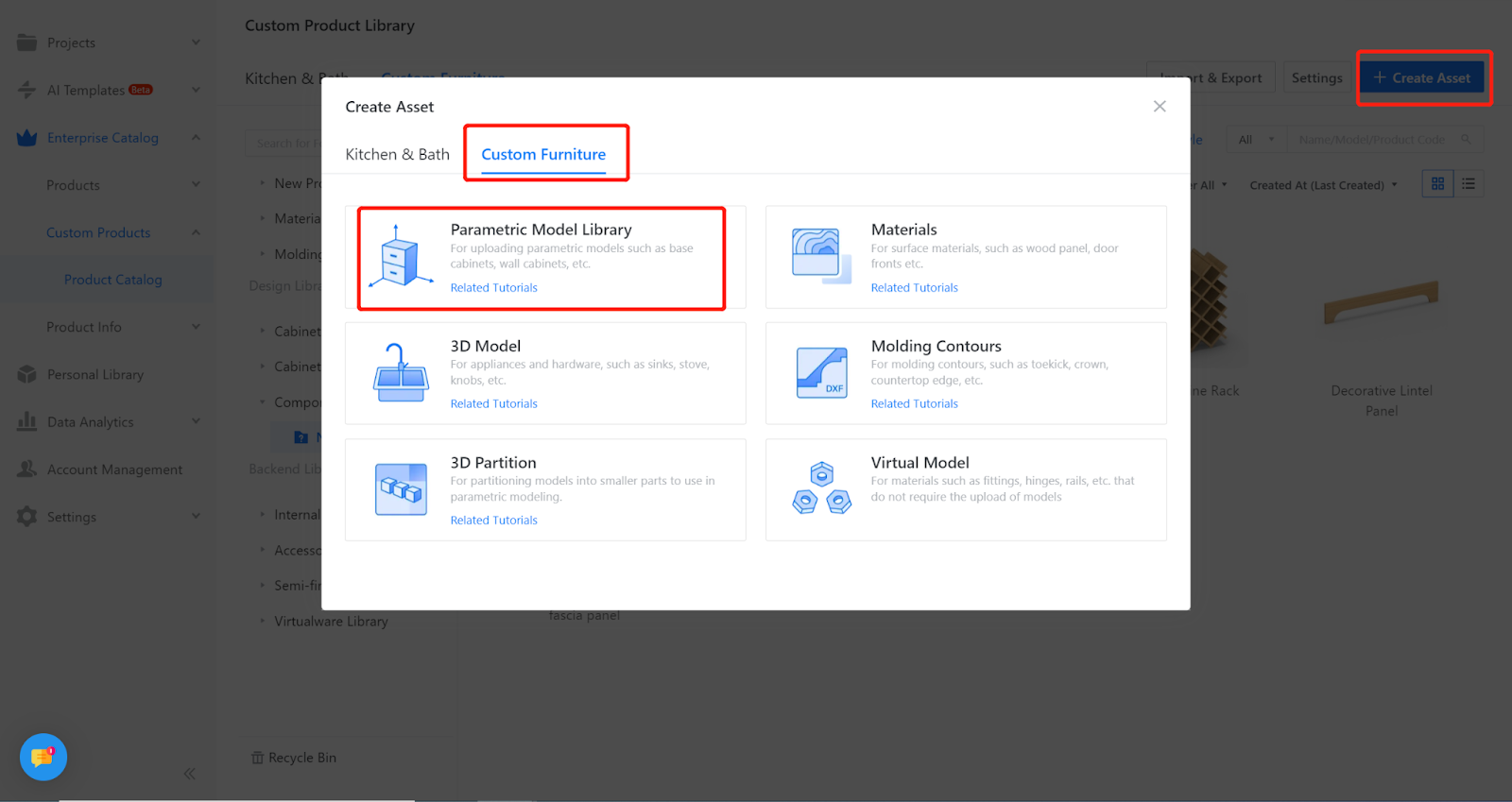

III.Parameter Configuration
Customize Parameter settings
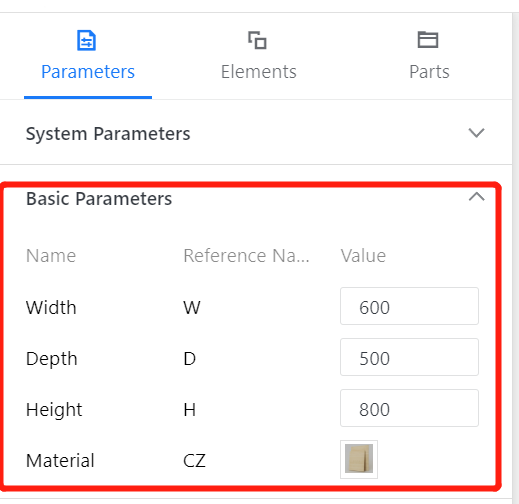
3-1. Width (W) - represents the size of the model panel in the X-axis direction, with a value range set to (e.g., 200-1200, current value: 660).

3-2. Depth (D) - represents the size of the model in the Y-axis direction, with a value range set to (e.g., 200-1200, current value: 330).

3-3. Height (H) - represents the size of the model in the Z-axis direction, with a value type set to optional (e.g., optional 98, current value: 98).
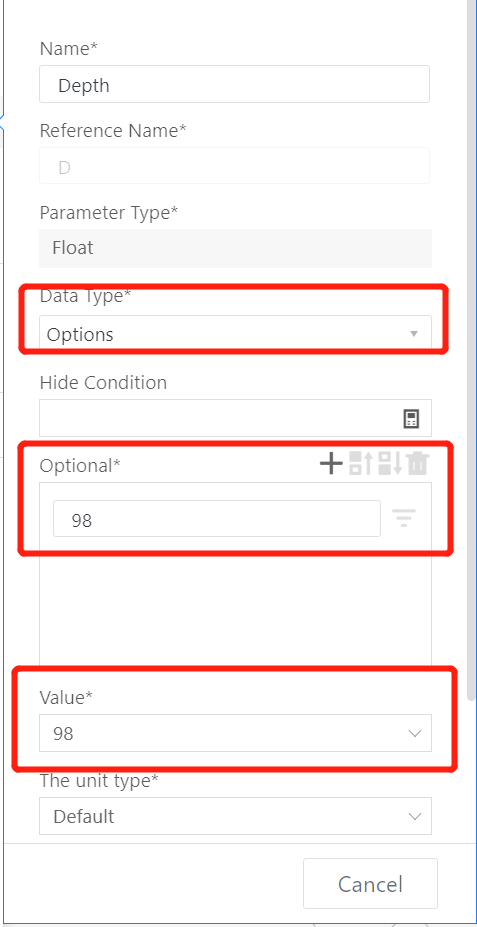
3-4. Material does not need to be modified, indicating that the model uses the default material.
IV.Top panel
Insert an 18mm flat panel model from the semi-finished product library, rename it as "Top panel," and set the parameters.
Width: W, Depth: #D, Height: 18, Position Z: #H-18
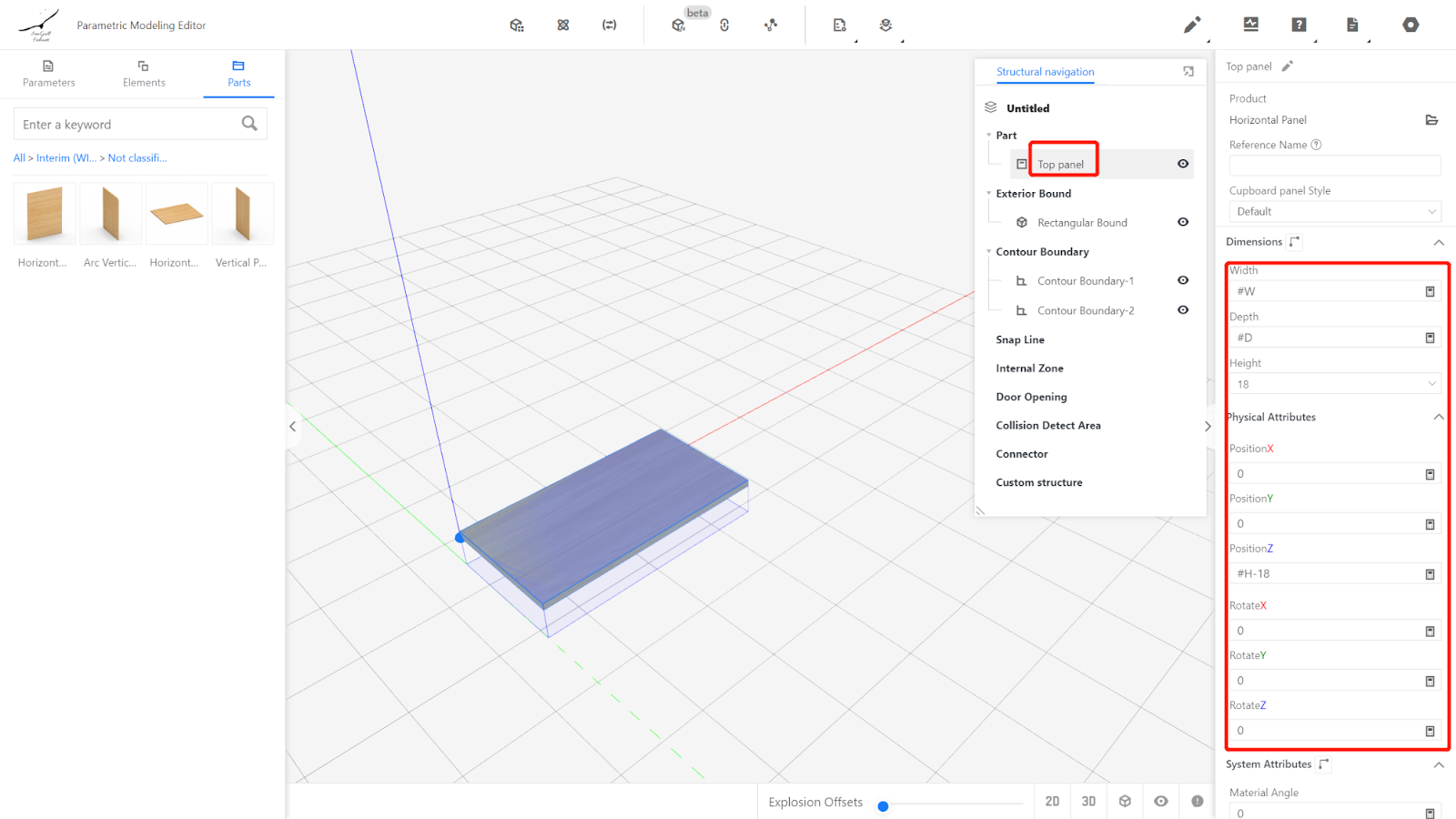
V. Cup Holder - Lofting and Array
5-1. Lofting 1: Lofting - Select Contour moldings
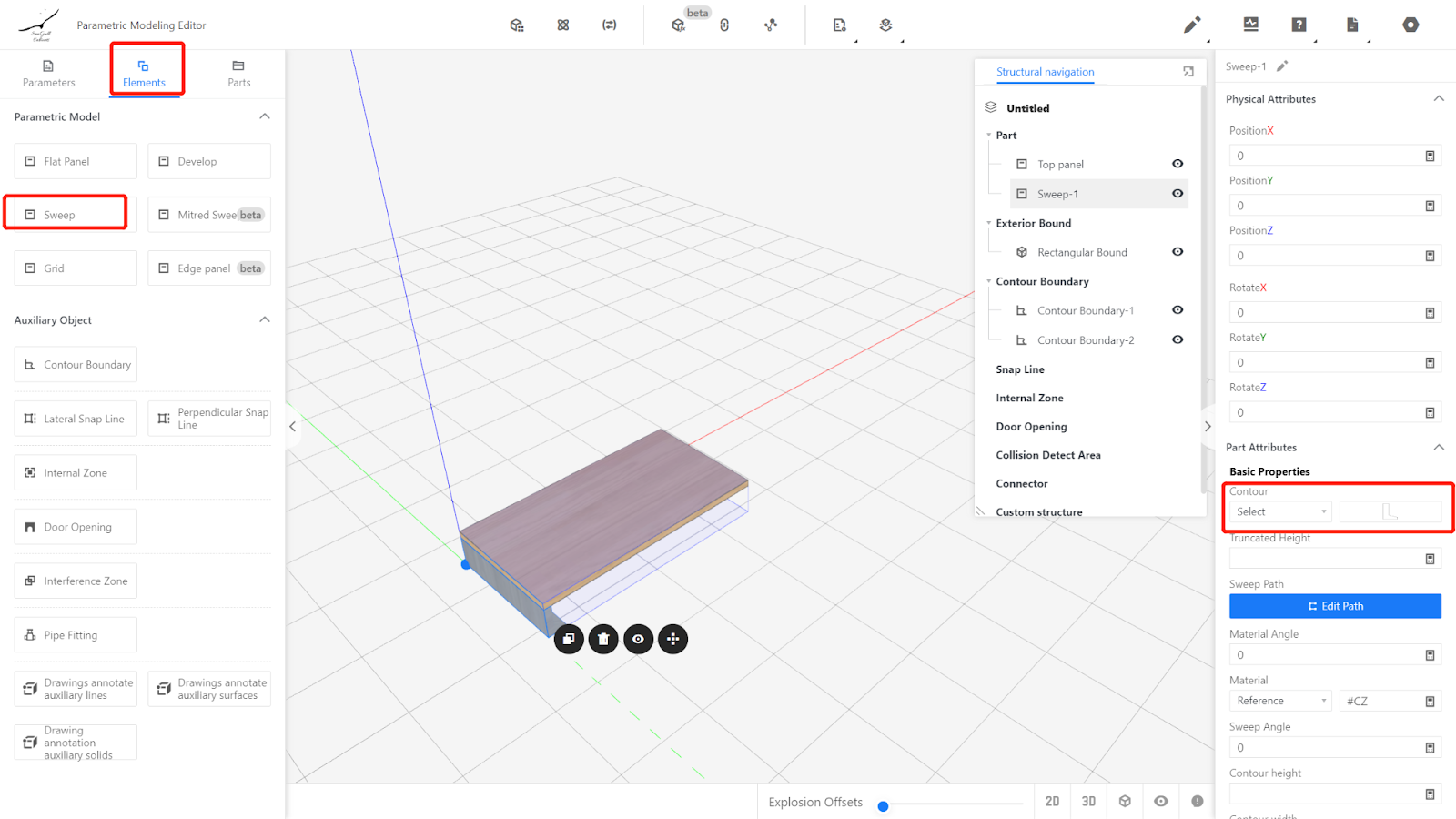
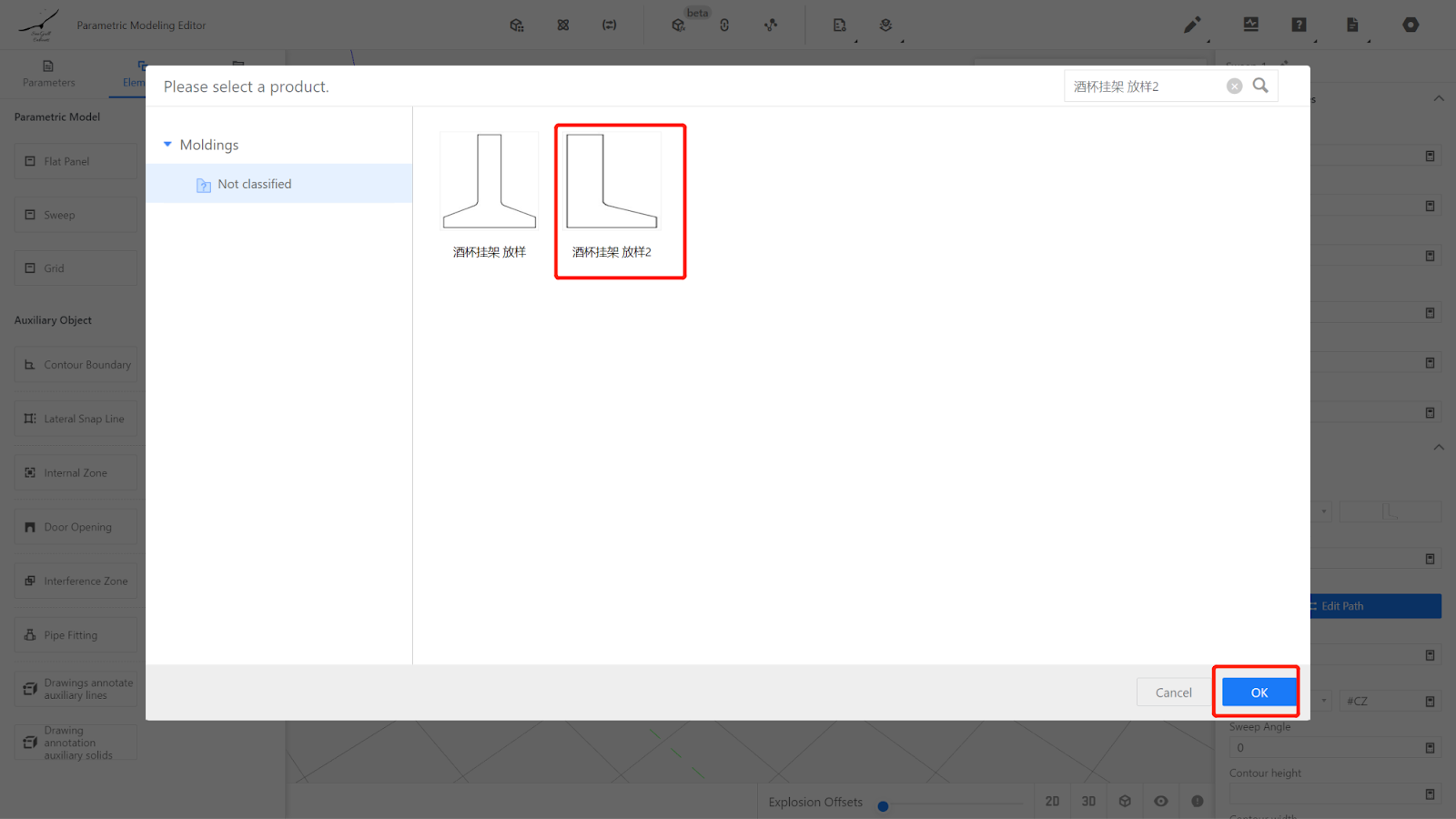
Edit Path - Point 2 (0, #D) - Save
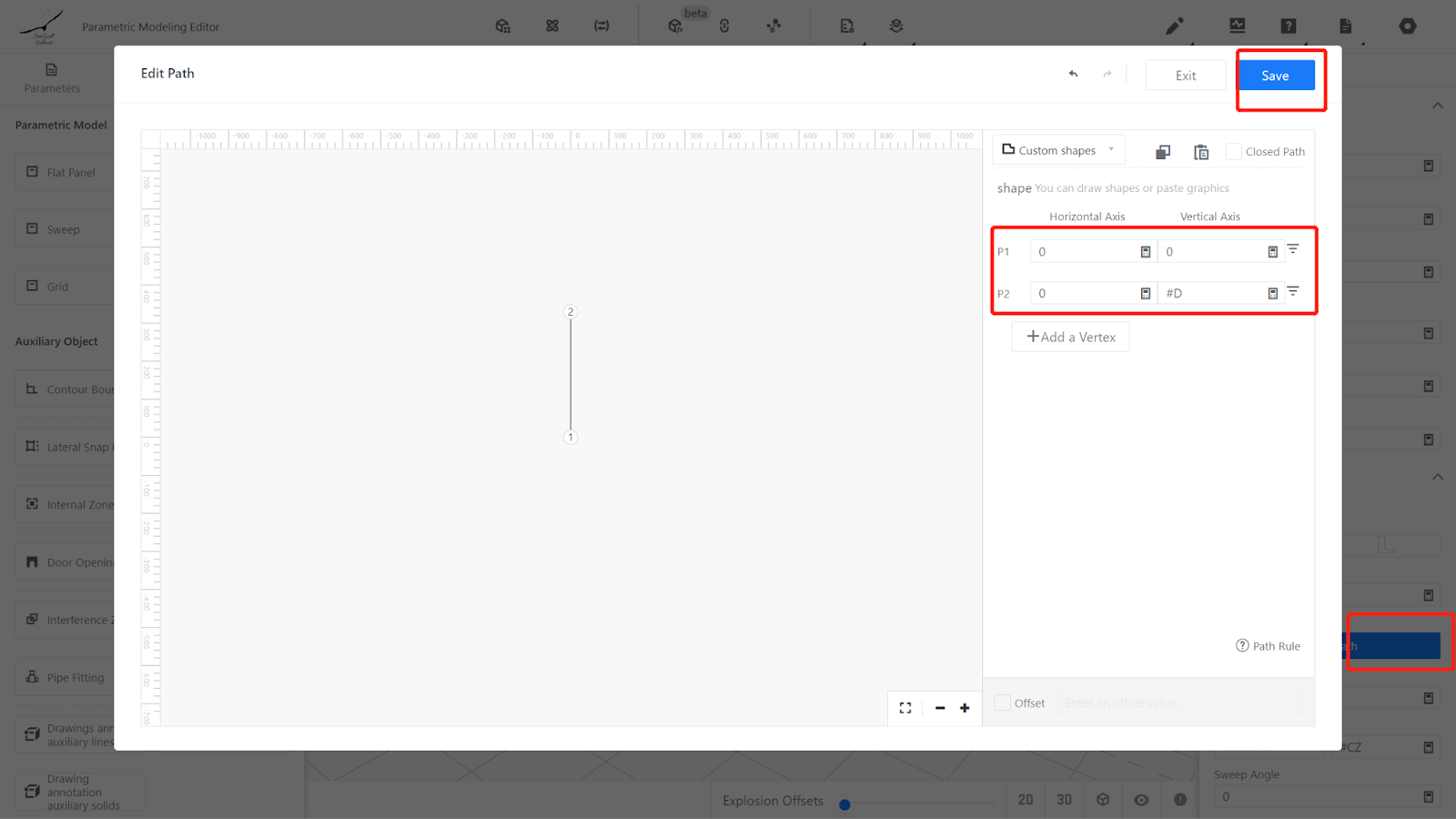
5-2. Copy Lofting 1 and set physical attributes. Position X: #W, Position Y: -#D, Rotation Z: 180.
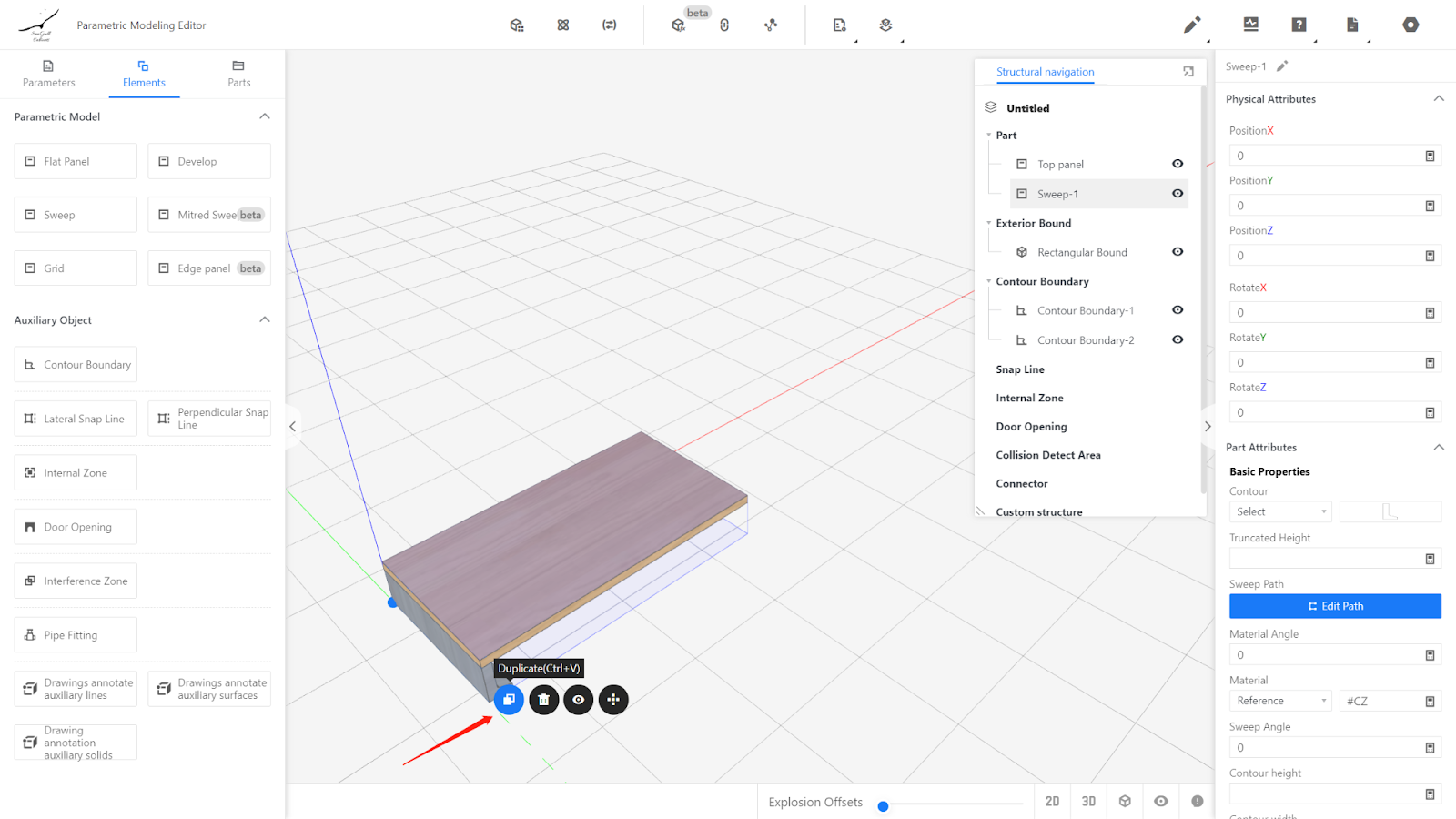
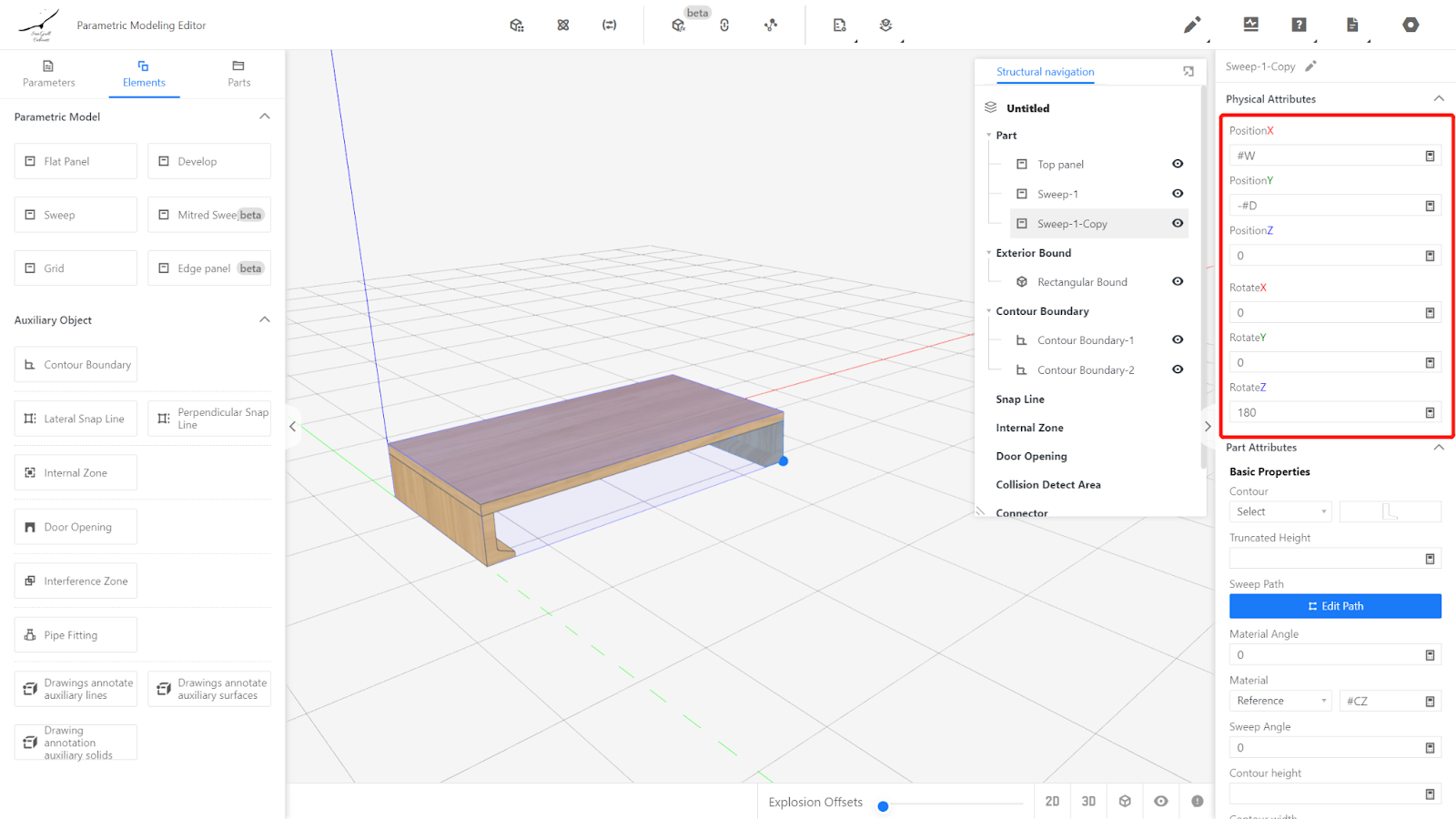
5-3. Lofting 2: Lofting - Select Contour moldings
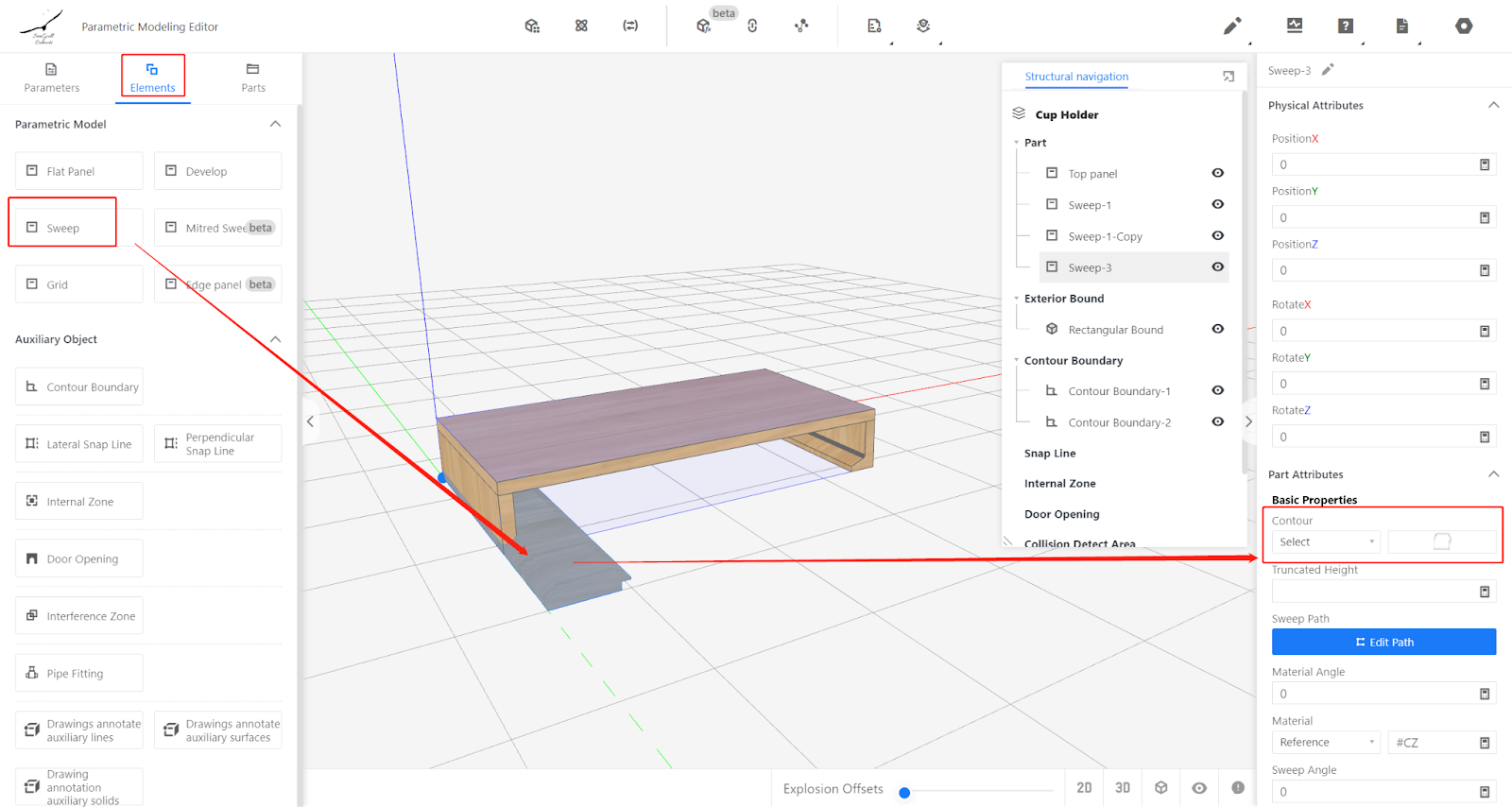
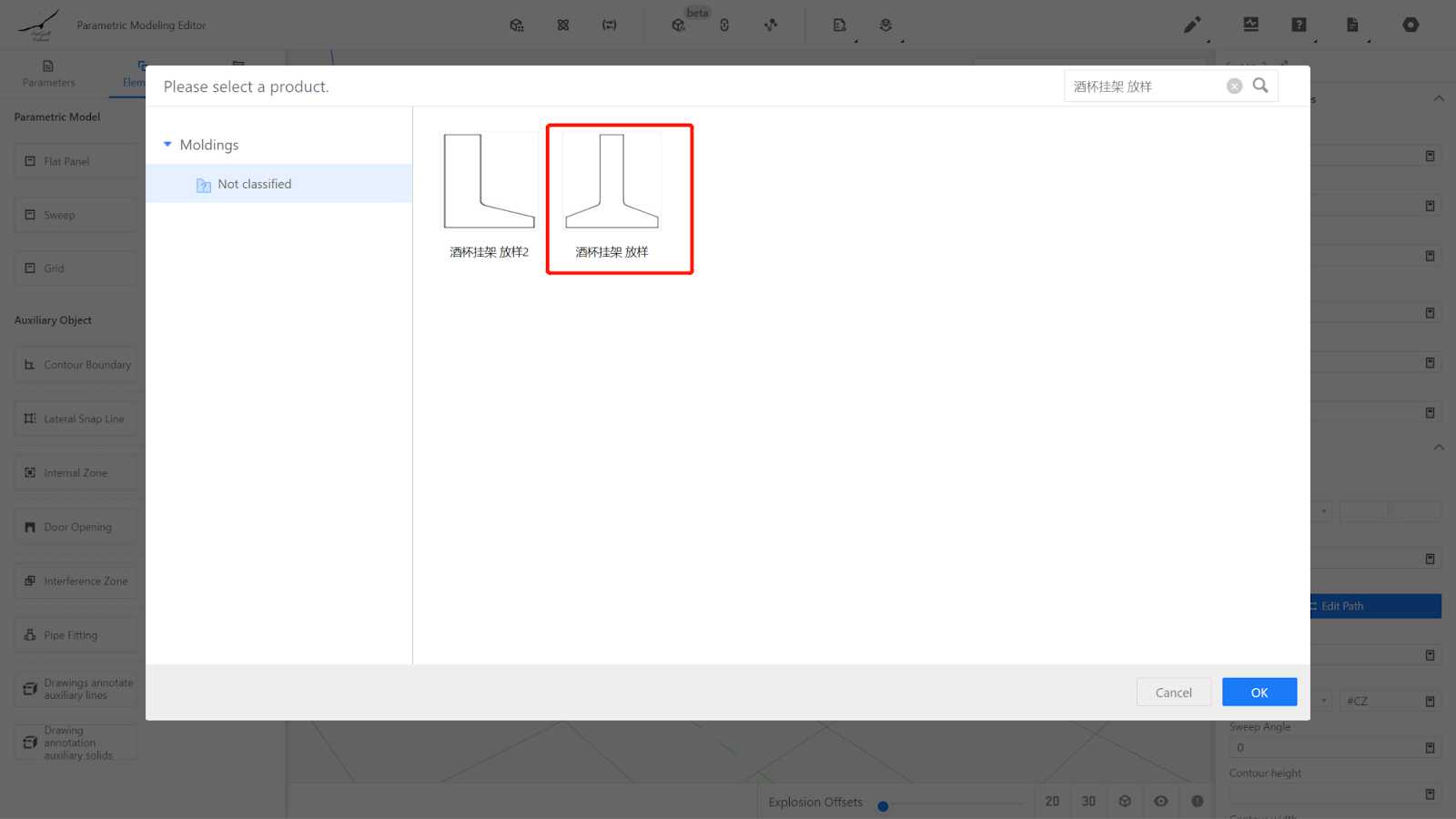
Edit Path - Point 2 (0, #D) - Save
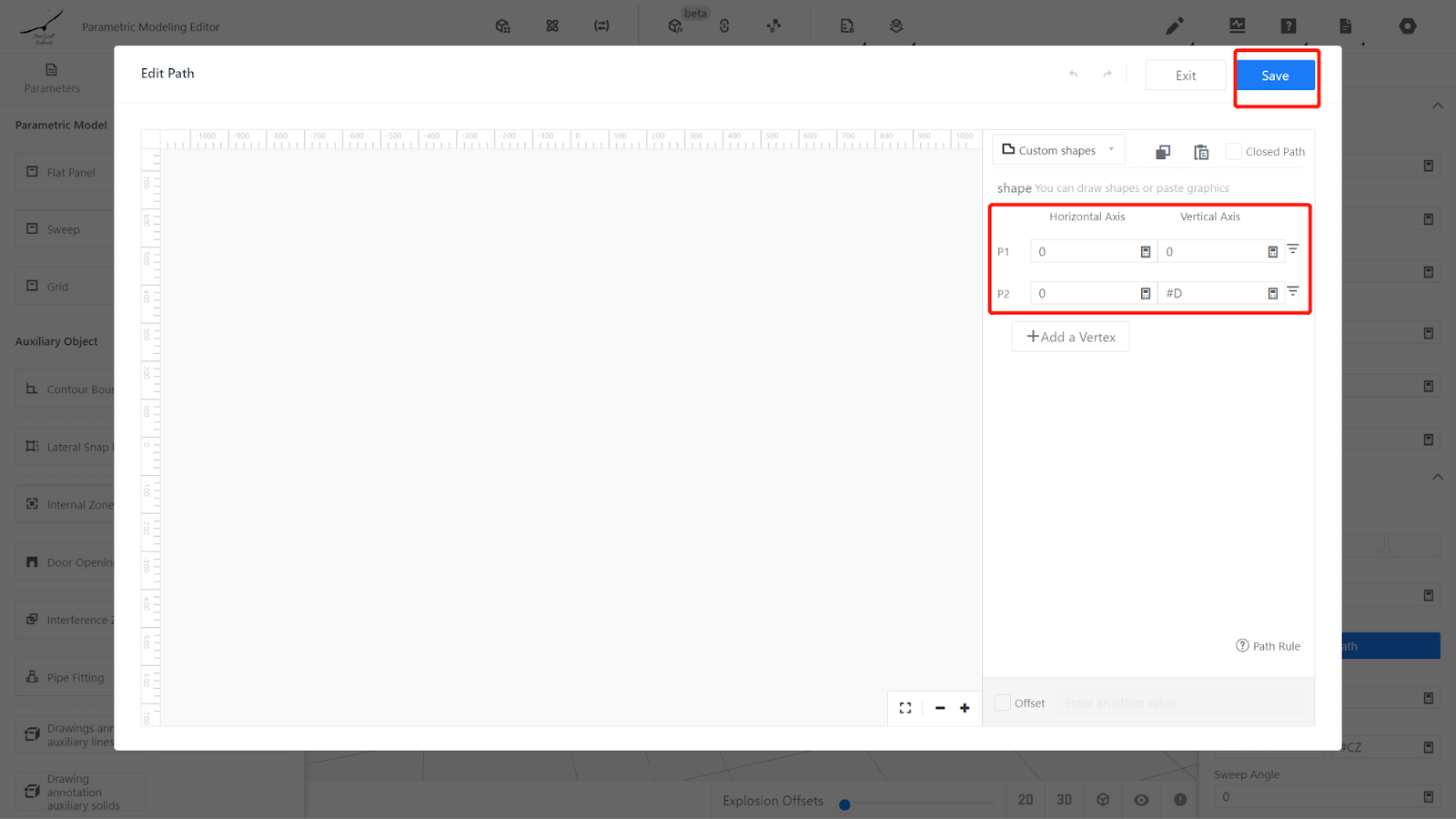
5-4. Add intermediate Parameters
Reference name A, current value: #floor((#W-45*2-15)/(72+15)), description: number of individual cup holders
(Explanation: 15 is the minimum gap between cup holders used for calculating the number of individual cup holders. The final gap value is not 15. The number of individual cup holders is calculated by dividing the array width (#W-452-15) by the sum of cup holder width and minimum gap (72+15).)
(#floor(xxxx) is the formula for rounding down, indicating that if the value inside the parentheses is not an integer, it takes the integer part.)
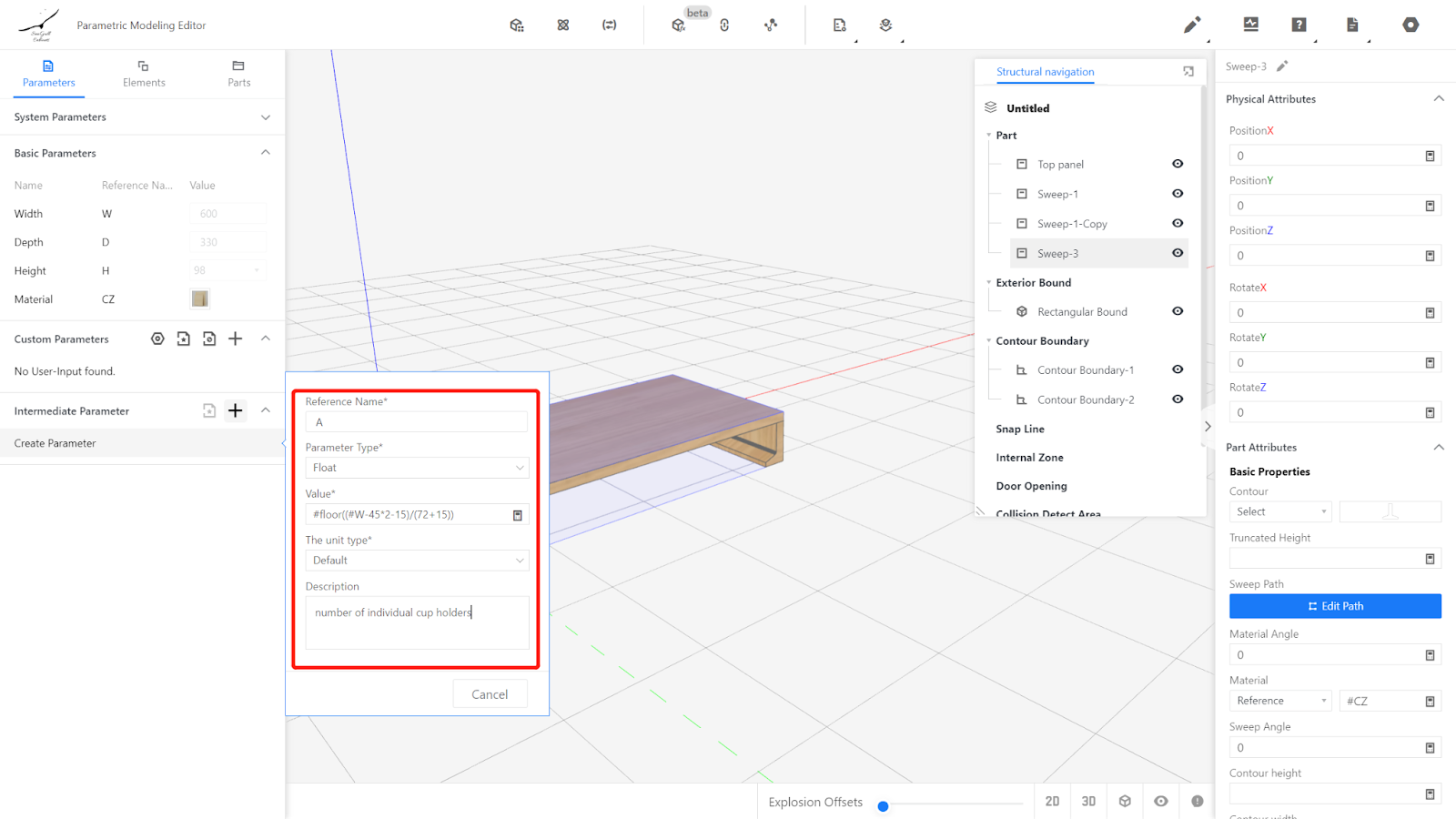
Reference name B, current value: #floor((#W-45*2-15)/(72+15))+1, description: number of gaps
(Explanation: The number of gaps is one more than the number of models, so it is obtained by adding 1 to the number of individual cup holders.)
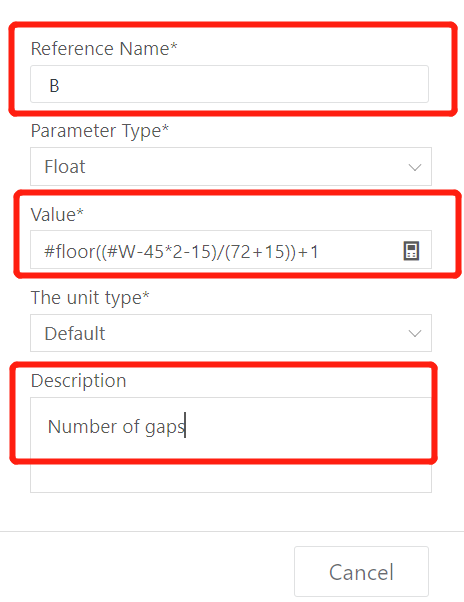
5-5. Select Lofting 2 - Array
Direction: +X, Array Length: #W-45*2-((#W-45*2)-72*#A)/#B, Array Mode: Count: #A;
(Explanation: ((#W-45*2)-72#A)/#B is the formula for calculating the actual gap value, where #A and #B are intermediate parameters.)

5-6. Physical attributes: Position X: 45+((#W-45*2)-72*#A)/#B
(Explanation: 45 + actual gap value)

VI.Testing the Model
Enter values within the range of W and D parameters and observe if the model changes correspondingly. If it does, it means the model is fine.
VII. Saving to Library
7-1. Click the file selection button in the top right corner, choose Save, select the subdirectory to save in, provide a name, and click Save.
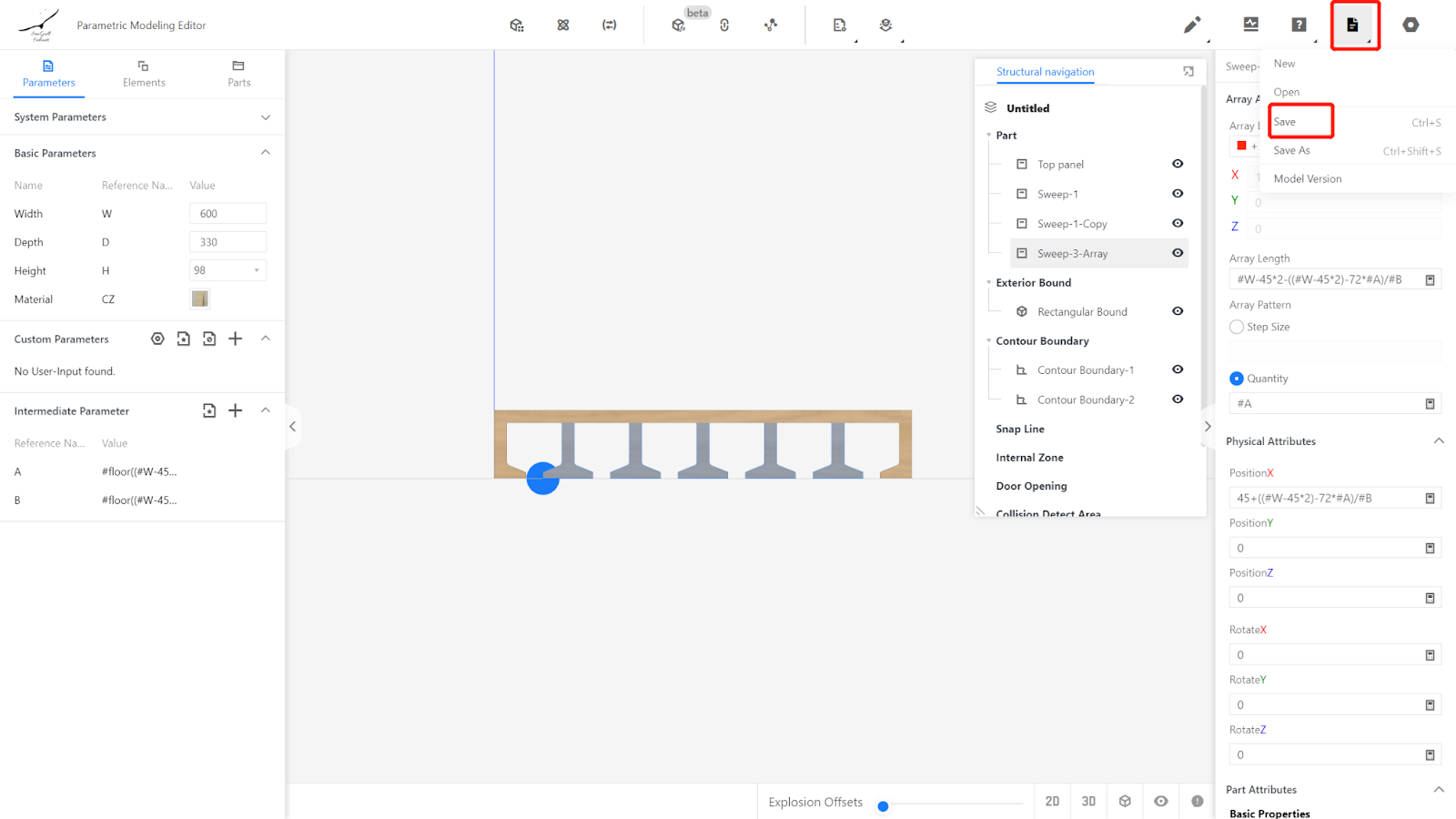
7-2. In the corresponding category on the product management page, find the model, select it, and click Store. Wait for the model rendering to complete.
